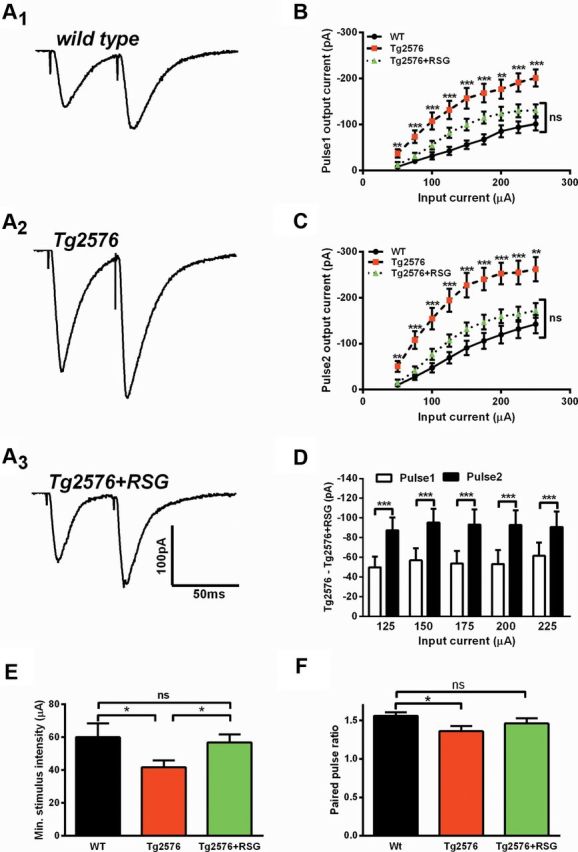Figure 2.

PPARγ agonism normalizes short-term plasticity and elevated probability of neurotransmitter release in 9MO Tg2576 DG. A, Representative traces of dentate granule cell eEPSCs using a paired-pulse stimulation paradigm by stimulating the mPP in hippocampal slices from WT (A1), Tg2576 (A2), and RSG-treated Tg2576 (A3). B, C, Synaptic I–O curves representing pulse1 (B) and pulse2 (C) show that eEPSCs were elevated in Tg2576 compared with WT (p < 0.01 or p < 0.001, one-way ANOVA with Bonferroni post hoc test), which did not differ from Tg2576 treated with RSG (p > 0.05, one-way ANOVA with Bonferroni post hoc test). D, RSG reduced the response to pulse2 (filled bars) more than pulse1 (open bars). For each input current, the output current from RSG-treated Tg2576 was subtracted from Tg2576 (p < 0.001, paired Student's t test). E, Minimal stimulus intensity was lower for Tg2576 than WT or RSG-treated Tg2576 (p < 0.05 unpaired Student's t test). WT did not differ from RSG-treated Tg2576 (p = 0.37, unpaired Student's t test). F, The ratio of pulse2 to pulse1 was reduced in Tg2576 compared with WT (p < 0.05, Kruskal–Wallis test with Dunn's post hoc test), which did not differ from RSG-treated Tg2576 (p > 0.05, Kruskal–Wallis test with Dunn's post hoc test). Results represent mean ± SEM, n = 10 (WT), 9 (Tg2576), and 11 (Tg2576 + RSG) for B–E and n = 15 (WT), 12 (Tg2576), and 13 (Tg2576 + RSG) for F. Calibration; 100 pA, 50 ms; *p < 0.05, **p < 0.01, ***p < 0.001.
